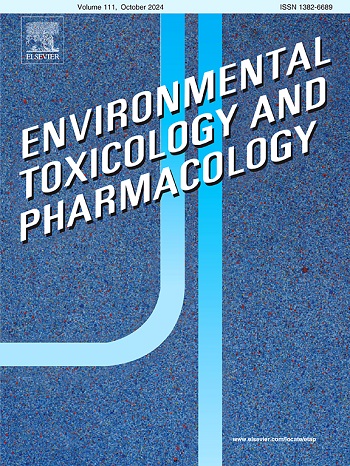Pesticide stress induces spermatozoa DNA damage and morphological abnormalities in Apis mellifera populations
IF 4.2
3区 环境科学与生态学
Q2 ENVIRONMENTAL SCIENCES
引用次数: 0
Abstract
The rising losses of honey bee colonies are causing public concern regarding the species' long-term sustainability. Therefore, this study aimed to assess how pesticide exposure affects DNA damage and morphological traits of drone spermatozoa across different Apis mellifera populations, categorized by varying colony loss rates. Chromatographic analysis identified 24 pesticide residues in bee samples and colony food stocks. Significant differences were found in comet assay parameters (tail intensity and Olive tail moment), frequency of morphological abnormalities, and morphometric variations in spermatozoa between apiaries experiencing high versus low mortality rates. The findings indicate that DNA damage and morphological abnormalities in spermatozoa, potentially caused by pesticide stress, compromise the reproductive ability of honey bee drones, contributing to the complex phenomenon of colony loss. The comet assay parameters and morphological aberrations of honey bee spermatozoa may serve as effective biomarkers for evaluating the fitness of drone spermatozoa and assessing environmental hazards to bee populations.
农药胁迫诱导蜜蜂种群精子DNA损伤和形态异常
蜂群损失的增加引起了公众对该物种长期可持续性的关注。因此,本研究旨在评估农药暴露如何影响不同蜜蜂种群中雄蜂精子的DNA损伤和形态特征,并根据不同的群体损失率进行分类。色谱分析鉴定了蜜蜂样品和蜂群食物中24种农药残留。在高死亡率和低死亡率的蜂场之间,在彗星测定参数(尾部强度和橄榄尾力矩)、形态异常频率和精子形态计量学变化方面发现了显著差异。研究结果表明,农药胁迫可能导致精子DNA损伤和形态异常,损害了雄蜂的生殖能力,导致了蜂群损失的复杂现象。蜜蜂精子的彗星检测参数和形态畸变可作为评价雄蜂精子适合度和评价蜜蜂种群环境危害的有效生物标志物。
本文章由计算机程序翻译,如有差异,请以英文原文为准。
求助全文
约1分钟内获得全文
求助全文
来源期刊
CiteScore
7.00
自引率
4.70%
发文量
185
审稿时长
34 days
期刊介绍:
Environmental Toxicology and Pharmacology publishes the results of studies concerning toxic and pharmacological effects of (human and veterinary) drugs and of environmental contaminants in animals and man.
Areas of special interest are: molecular mechanisms of toxicity, biotransformation and toxicokinetics (including toxicokinetic modelling), molecular, biochemical and physiological mechanisms explaining differences in sensitivity between species and individuals, the characterisation of pathophysiological models and mechanisms involved in the development of effects and the identification of biological markers that can be used to study exposure and effects in man and animals.
In addition to full length papers, short communications, full-length reviews and mini-reviews, Environmental Toxicology and Pharmacology will publish in depth assessments of special problem areas. The latter publications may exceed the length of a full length paper three to fourfold. A basic requirement is that the assessments are made under the auspices of international groups of leading experts in the fields concerned. The information examined may either consist of data that were already published, or of new data that were obtained within the framework of collaborative research programmes. Provision is also made for the acceptance of minireviews on (classes of) compounds, toxicities or mechanisms, debating recent advances in rapidly developing fields that fall within the scope of the journal.

 求助内容:
求助内容: 应助结果提醒方式:
应助结果提醒方式:


